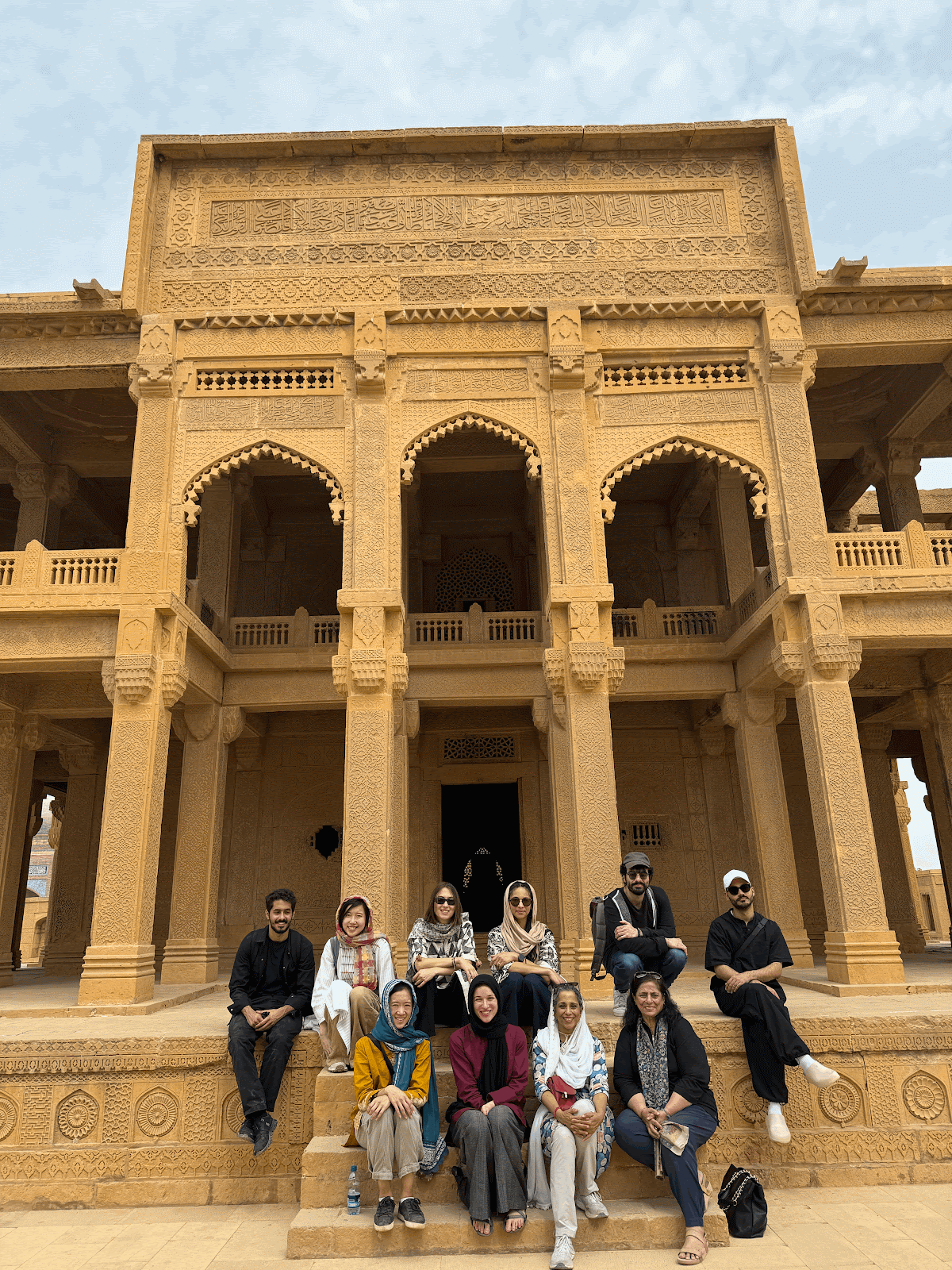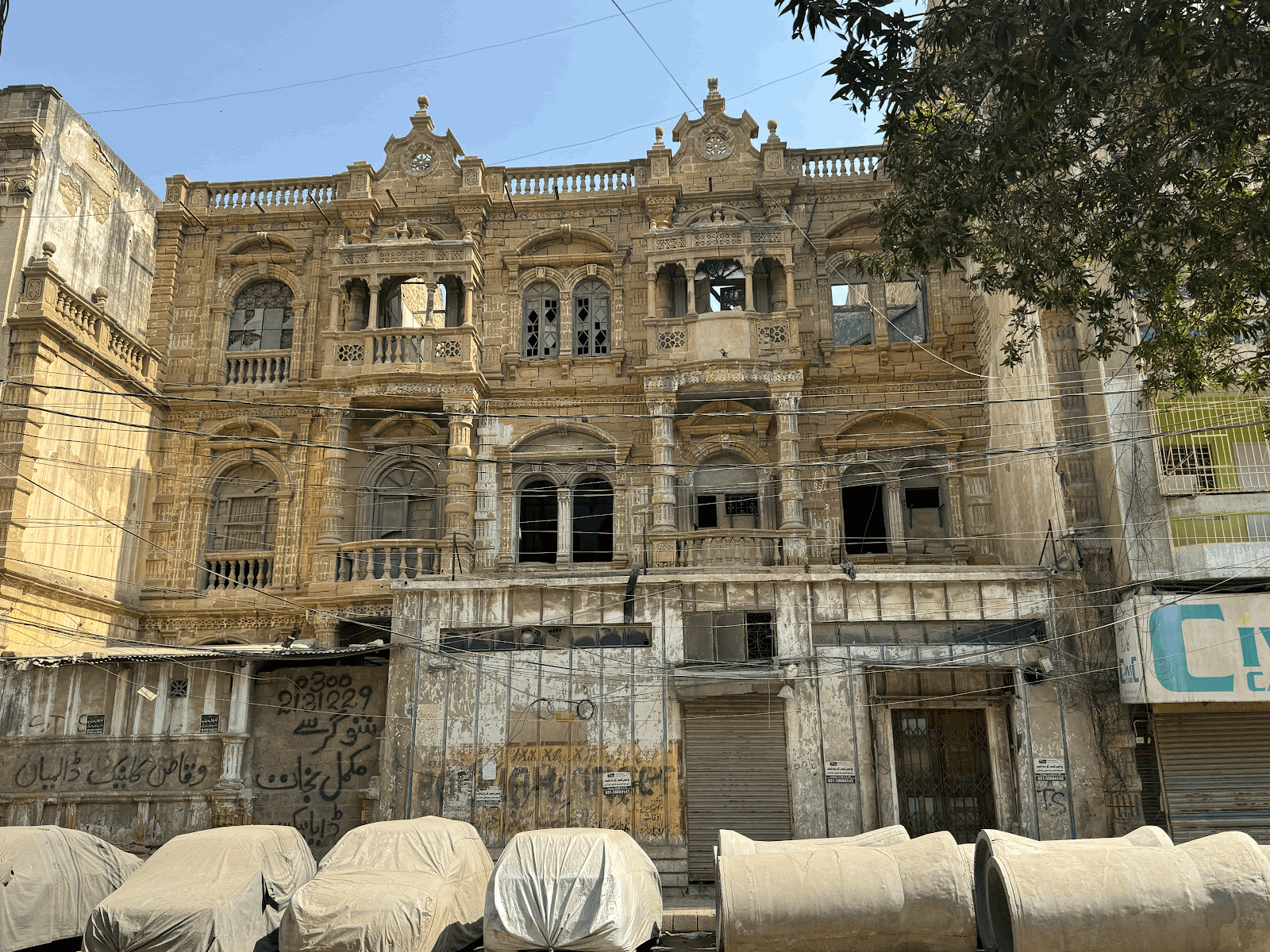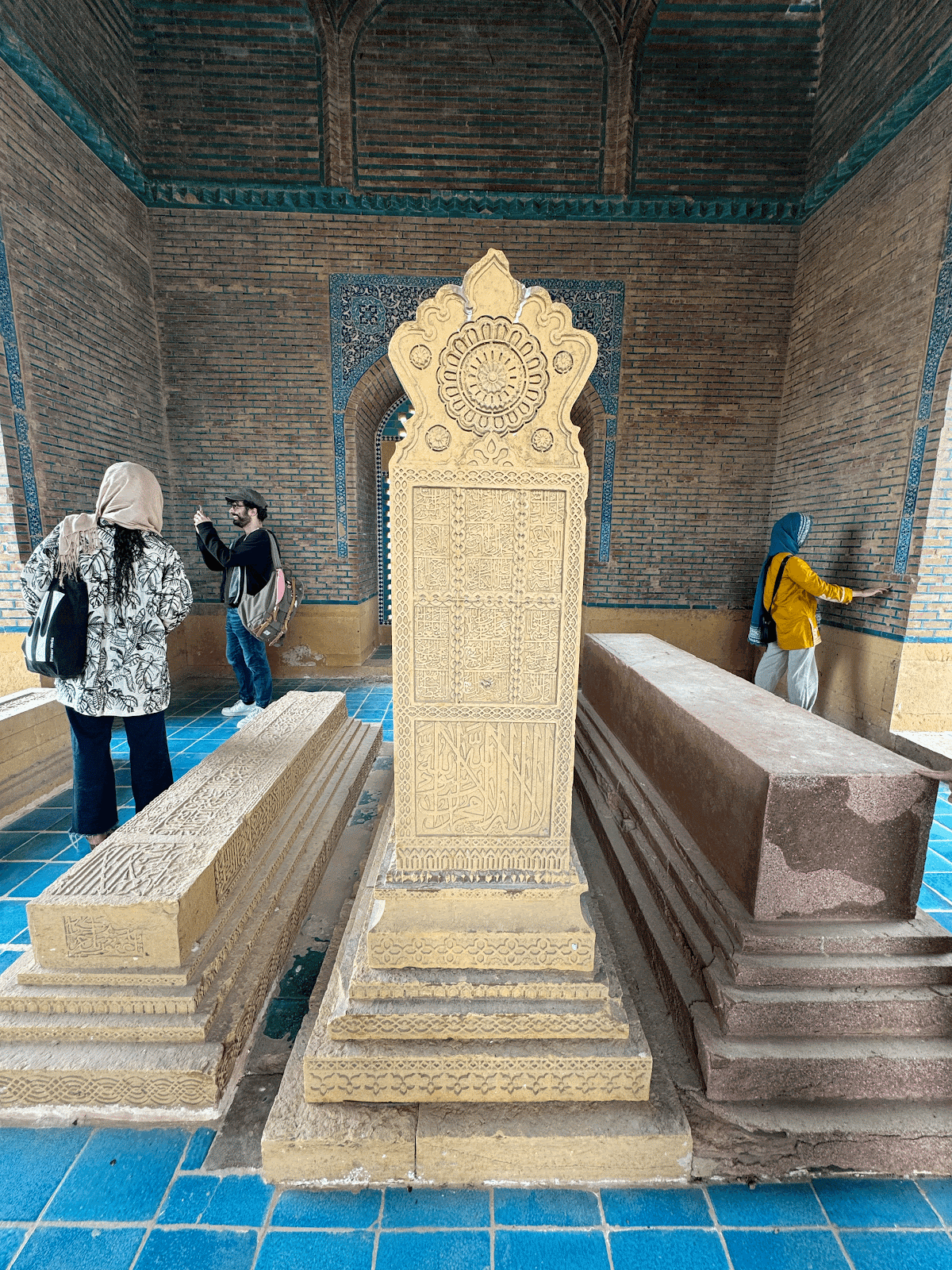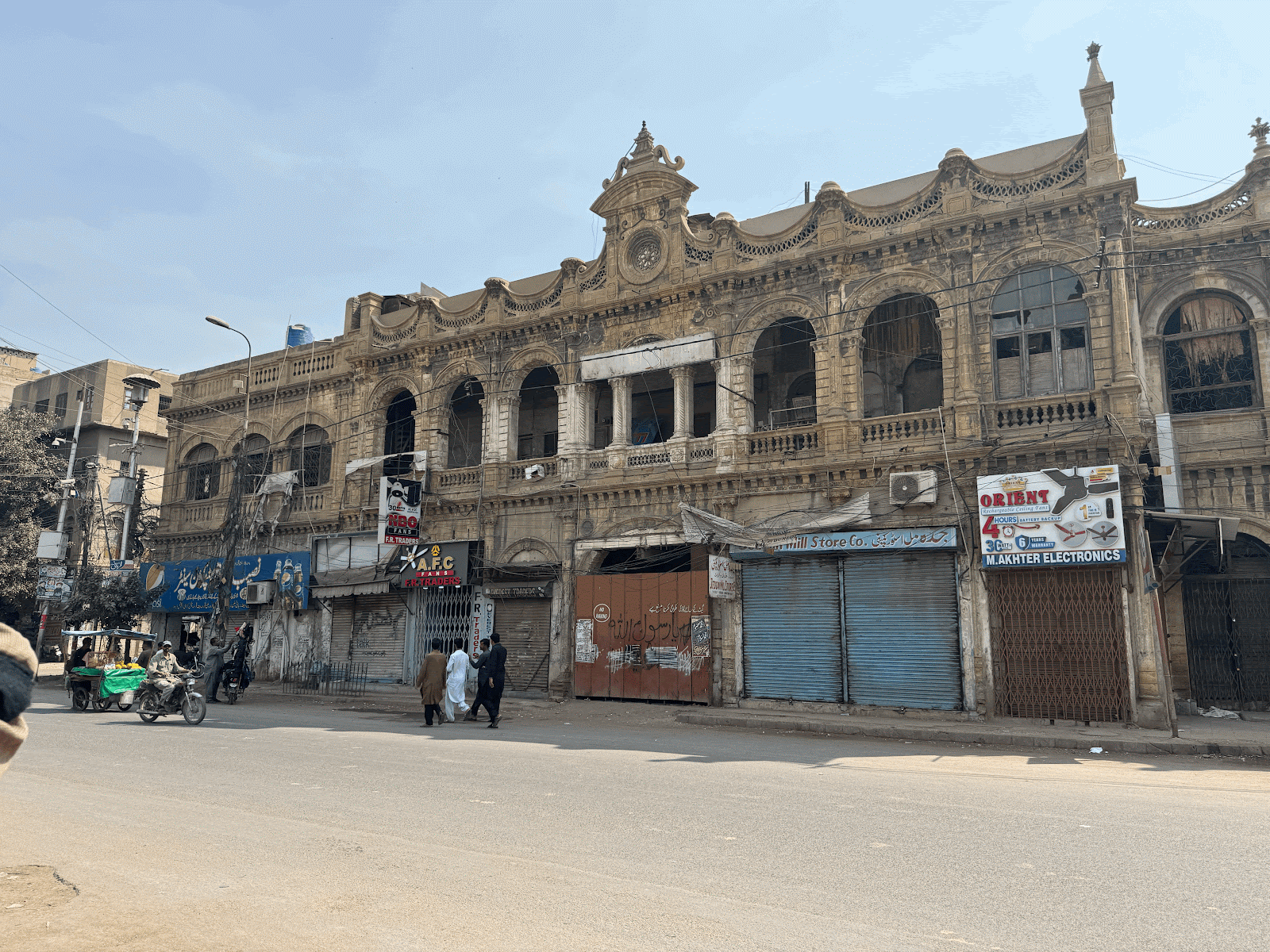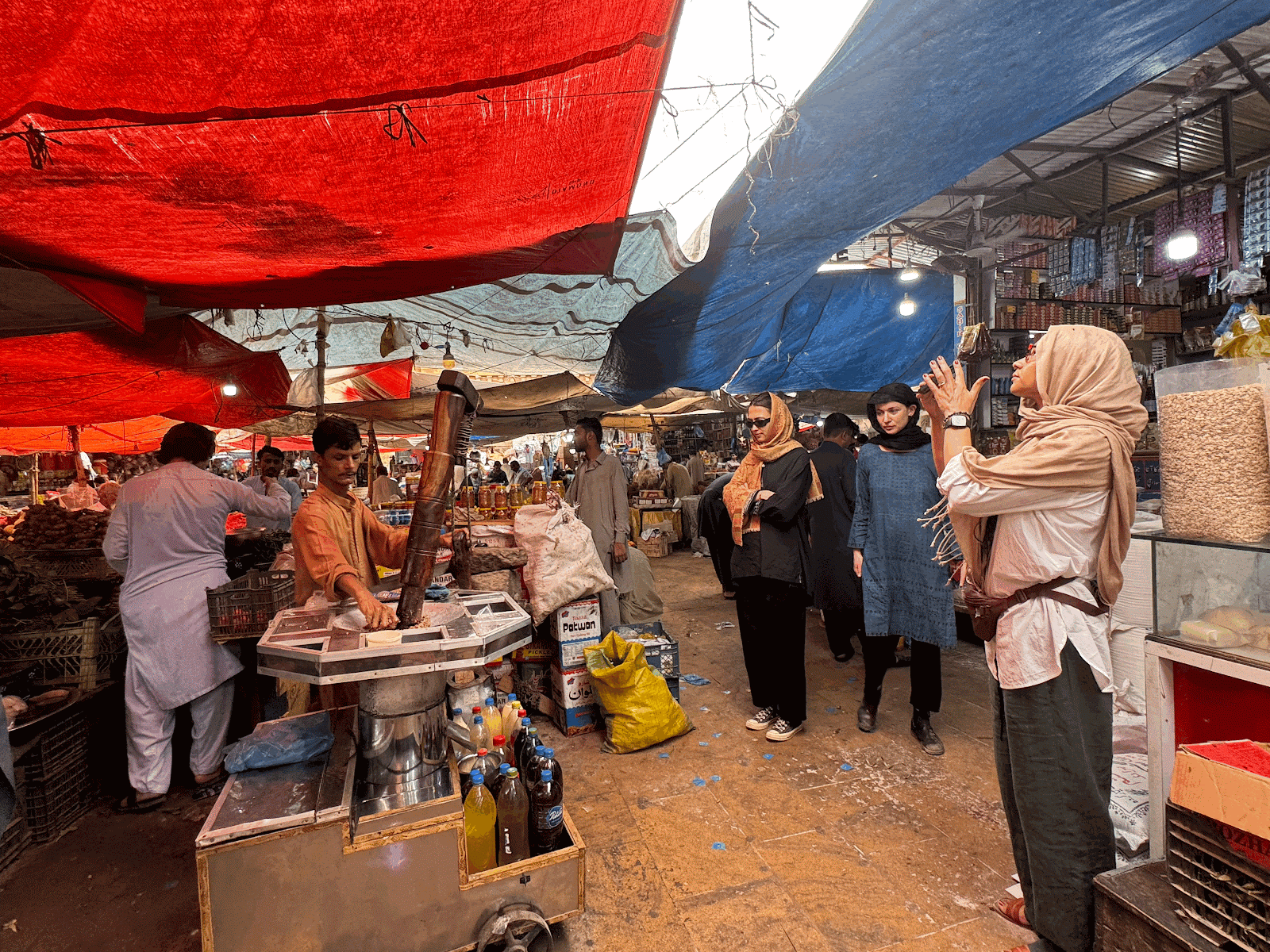Karachi as Classroom: Yale students navigate adaptive reuse in the global megacity
How are heritage preservation and climate solutions implemented in megacities across the globe?
In collaboration with Professor Sunil Bald, Professor Kishwar Rizvi designed a graduate-level course exploring that question through Pakistan’s financial capital, Karachi. Rizvi is the Robert Lehman Professor in the History of Art, in the History of Art Department and the Yale School of Architecture. Given her joint appointments, she sought to create a course spanning various departments, with an emphasis on both theory and practice. Adaptive Reuse in Karachi: History, Documentation, & Intervention took place in Spring 2025.
Funded by the MacMillan Center’s Course Travel Abroad grant, the class of eight students had the opportunity to travel to Karachi in February. There, they experienced the city they had been learning about in the classroom.
Karachi became a major port city after the British annexed it in 1842, and its architecture has been shaped by the colonial period. But much of that architecture, said Rizvi, was built by Anglo-Indian Christian communities alongside Zoroastrian, Hindu, and Muslim families. Rizvi said Karachi is understudied due to the perception that its geopolitical tensions have rendered it inaccessible.
Today, the city faces gentrification, ex-urbanization, and climate-induced migration.
“Because it’s the biggest city in Pakistan and also the economic hub of the country, there are a number of climate refugees pouring into the city,” Rizvi said.
Over 20 million people live in Karachi, but the city is plagued by climate disasters like flooding and earthquakes that have damaged its infrastructure. Adaptive reuse, the process of repurposing existing buildings while preserving their architectural character, is one path forward.
In designing the course, Rizvi and Bald hoped to address questions about creating ecologically sound cities that have the capacity to survive into the future. For Rizvi, answering those questions necessitated on-site fieldwork.
“There’s nothing like being on site,” said Rizvi. “It changes the way we think about a place.”
The Karachi seminar was inspired by the work of the Heritage Foundation of Pakistan, which was established by award-winning architect Yasmeen Lari and her husband, Suhail Lari.
As the first woman to open an architecture firm in Pakistan, Lari has often utilized participatory methods to design sites like public housing, pedestrian sidewalks, zero-carbon earthquake shelters. She was recently awarded the 2025 Lisbon Architecture Triennale Lifetime Achievement Award for her lifetime commitment to sustainable architecture.
Learning from HFP, the Indus Valley School of Art and Architecture, and the NED University of Engineering and Technology, students in the course engaged with scholars, community stakeholders, and architects.
Rizvi said fieldwork helps ensure that “we are not just extracting knowledge from those parts of the world, but we are actually truly collaborating, starting conversations.” Going forward, she imagines more cross-cultural collaboration between scholars at Yale and those in Karachi.
“My hope for the future is that we can have much more robust and equitable knowledge sharing,” said Rizvi.
Upon returning to New Haven, students spent a week learning directly from Lari, who had come to the University to give a lecture at the School of Architecture.
At Yale, Lari engaged with students in the course through workshops on heritage, urban ecology, and sustainability. During that time, she also participated in dialogues across campus with students and faculty from the School of Architecture, the MacMillan Center, and the School of the Environment.
Julia Qingye Wang, a History of Art student who took part in the seminar on Karachi, said that collaborating with Lari was a highlight of her experience. Wang, who did not have much background in architecture, said that Lari’s “charisma” and “vision” made for compelling interdisciplinary insights.
That emphasis on collaboration across departments was infused into the course, too. Wang added that she gained new insights from her own peers studying architecture, environmental science and South Asia.
The readings assigned by Professors Rizvi and Bald laid the foundations for understanding megacities, and Wang enjoyed making connections between Karachi and other South Asian megacities like Mumbai and Calcutta. For her final essay, she wrote about colonial histories and decolonizing movements in Karachi and her home city of Shanghai.
Laetitia Morlie, a Belgian PhD student in the Department of Architecture, said she was compelled by Wang’s notion that the class trip was “part of the living archive of Karachi.”
M. A. Jinnah Road, Karachi. Photograph courtesy of Kishwar Rizvi.
This sentiment permeates a booklet compiling reflections written by each student on various sites visited by the class in Karachi. Morlie wrote her reflection about the Old Nusserwanjee building, which originally served as the office of Karachi’s first mayor, Jamshed Nusserwanjee Mehta.
Throughout the course, Morlie said her focus shifted away from identifying a “singular retrofit solution” and towards “bridging history, theory, and design as forms of story-making.”
Collaborating with her peers from various academic backgrounds to interpret those intersections, she found they had more in common than she had initially thought.
“During the trip, conversations kept circling back to similar writers and thinkers which really pointed to a collective curiosity around spatial politics, the role of religion in shaping urban environments, and environmental histories,” said Morlie.
Morlie chose to take the course because of its co-teaching format, and she was drawn to the course’s emphasis on meeting practitioners across various fields to learn about how they’re addressing adaptive reuse.
“The professors were incredibly generous in facilitating these conversations, which allowed us to see the diversity of perspectives at play on the ground.”
Morlie noted that a highlight of the trip was visiting the Pioneer Book House, one of Karachi’s oldest bookstores. There, writer Maniza Naqvi spoke to the class about the history of Partition, current diplomatic relations between Pakistan and the U.S., and the power of language.
Like Wang and Morlie, seminar participant Estella Dieci said one of her favorite parts of the course was traveling to Karachi. A Master of Environmental Design student at the Yale School of Architecture, she felt the trip was “an experience that could not be replicated.”
Dieci underscored that visiting Karachi “greatly enriched and complicated” her understanding of the city and expressed her gratitude for the opportunity to meet Rizvi’s own friends and family.
Wang also noted that the class enjoyed the benefits of traveling with an expert—Rizvi herself is from Karachi. Most of all, she felt that the fieldwork made her learning come to life.
Interior view of Empress Market (built 1884-1889), Karachi. Photograph courtesy of Kishwar Rizvi.
In reference to interacting with people across the city, Wang said there were “a lot of microhistories that you’re seeing.” She continued, “It’s good to be on the site and know what’s been happening in people’s lives.”
Those microhistories also made the trip memorable for Dieci, who treasured meeting Karachi’s communities and seeing the city first hand.
“The opportunity to conduct fieldwork in Karachi was not only one of the best parts of the course, but one of the most unique and meaningful experiences I have had as a student,” said Dieci.
- Humanity
- Societal Resilience
